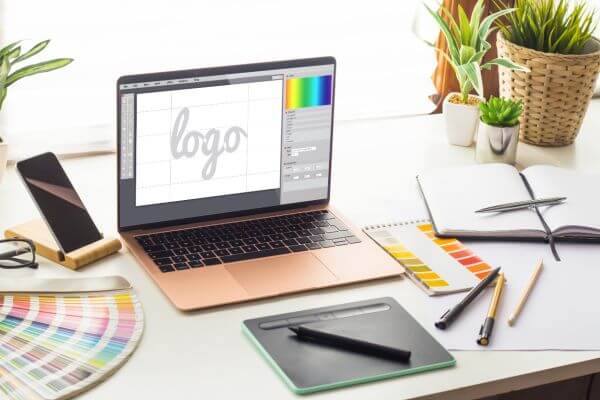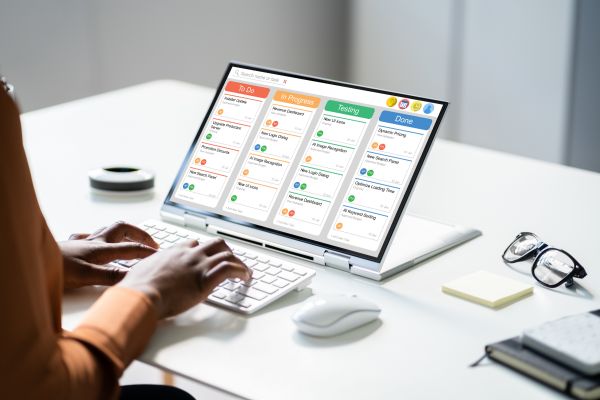How to Turn Your Talent into Profit: Business Guide for Design Freelancers
Welcome to our comprehensive business guide for design freelancers, where we will show you how to harness your talent and transform it into profitable success. As a design freelancer, you possess a unique set of skills that can be monetized effectively. However, in order to maximize your earning potential and achieve sustainable success, a strategic approach is crucial.
In this guide, we will provide you with valuable insights and practical tips to help you navigate the world of business as a design freelancer. From developing a solid business strategy to implementing effective marketing and branding techniques, we will cover all the essential aspects for turning your talent into profit.
So, whether you are just starting out or looking to take your freelancing business to the next level, this guide is here to equip you with the knowledge and strategies needed to build a thriving design business.
Key Takeaways:
- Understand the importance of developing a business strategy as a design freelancer.
- Implement effective marketing and branding techniques to promote your services and attract clients.
- Explore different pricing strategies to ensure fair compensation for your design work.
- Build strong client relationships to secure repeat business and maintain client satisfaction.
- Utilize the strategies and tips provided in this guide to turn your design talent into profit.
Developing Your Business Strategy as a Design Freelancer
As a design freelancer, having a solid business strategy is essential for success. It enables you to effectively plan and navigate your professional journey, ensuring that you make informed decisions and maximize your potential for growth and profitability. Here are some tips and techniques to help you develop a strong business strategy:
- Define your goals: Begin by setting clear and measurable goals for your design freelancing business. Consider what you want to achieve in terms of financial targets, client base, skill development, and professional reputation. These goals will serve as a roadmap for your strategy.
- Analyze your market: Conduct thorough research to understand your target market and the demand for your design services. Identify your competitors, their strengths and weaknesses, and any gaps in the market that you can tap into. This analysis will inform your positioning and marketing strategies.
- Identify your target audience: Define your ideal clients based on factors such as industry, size, location, and design needs. This will help you tailor your services and marketing efforts to attract the right clients who value your expertise.
- Develop a pricing strategy: Determine your pricing structure based on factors such as your skills, experience, market rates, and the value you offer to clients. Consider offering packages or tiered pricing to cater to different client budgets and needs.
- Create a strong brand: Invest in creating a cohesive and compelling brand identity that reflects your design style, values, and unique selling proposition. Establish brand guidelines for consistent visual and verbal communication across all platforms.
- Market and promote your services: Develop a robust marketing plan to raise awareness of your design freelancing services. Utilize digital channels, such as social media, professional networking platforms, and a well-optimized website, to showcase your portfolio and attract potential clients.
- Continuous learning and improvement: Stay abreast of industry trends, new design techniques, and evolving client needs. Invest in your professional development to enhance your skills and expand your service offerings, keeping your business strategy adaptable and relevant.
By implementing these tips and techniques, you’ll be well on your way to developing a strong and effective business strategy as a design freelancer. With a clear roadmap in place, you’ll be able to navigate the challenges and capitalize on opportunities, ultimately positioning yourself for long-term success.
Marketing and Branding for Design Freelancers
As a design freelancer, effectively marketing and branding your services is essential for attracting clients and standing out in a competitive industry. With the right strategies, you can showcase your expertise, build a strong brand identity, and cultivate a loyal client base.
1. Promote Your Services
The first step in marketing yourself as a design freelancer is to promote your services to potential clients. Utilize various channels such as social media platforms, online portfolios, and industry-specific websites to showcase your work and attract attention. Consider using visually engaging and well-written descriptions to highlight your unique skills and specialization.
2. Build Your Brand Identity
Creating a distinct and memorable brand identity is crucial for design freelancers. Develop a cohesive visual presence by designing a professional logo and consistent branding elements that reflect your style and values. Use these elements across all your marketing materials to create a cohesive brand image that clients can easily recognize and remember.
3. Target Your Ideal Clients
Identify your target market and tailor your marketing efforts towards reaching those specific clients. Research their needs, preferences, and pain points, then craft your messaging to resonate with them. By understanding your ideal clients and addressing their specific challenges, you can position yourself as the solution they are looking for.
4. Establish Thought Leadership
Become a recognized authority in your field by sharing your knowledge and insights. Write blog posts, contribute guest articles, or create video tutorials that provide valuable information to your target audience. By positioning yourself as a thought leader, you can build credibility, attract clients, and solidify your place within the design industry.
Table: Effective Marketing and Branding Strategies for Design Freelancers
| Strategy | Description |
| Social Media Marketing | Utilize platforms like Instagram, LinkedIn, and Behance to showcase your work, connect with potential clients, and build a following. |
| Content Marketing | Create valuable and informative content, such as blog posts, videos, or podcasts, to establish yourself as an expert and attract clients. |
| Email Marketing | Build an email list of interested prospects and regularly send them updates, promotions, and newsletters to stay top of mind. |
| Networking | Attend industry events, join professional organizations, and engage in online communities to meet potential clients and expand your network. |
| Client Testimonials | Showcase positive feedback from satisfied clients on your website or portfolio to build trust and inspire confidence in potential clients. |
By implementing these effective marketing and branding strategies, you can position yourself as a sought-after design freelancer and attract clients who value your expertise and unique style. Remember that consistency, professionalism, and a strong brand identity are key to standing out in the design industry.
Pricing Strategies for Design Freelancers
As a design freelancer, one of the key factors in ensuring your long-term success is setting the right prices for your services. Pricing strategies play a crucial role in determining your profitability and attracting clients who value your skills and expertise. To help you charge appropriately and maximize your earning potential, here are some effective pricing strategies to consider:
1. Hourly Rate:
Charging an hourly rate is one of the most common pricing strategies used by design freelancers. This approach allows you to bill clients based on the actual time spent working on their projects. When determining your hourly rate, consider factors such as your level of experience, expertise, and market demand. Ensure that your rate aligns with industry standards to avoid pricing yourself out of the market or underselling your services.
2. Project-Based Pricing:
Project-based pricing involves setting a fixed fee for a specific design project. This strategy enables you to provide clients with a clear and upfront cost for the entire project, regardless of the time it takes you to complete it. When setting your project-based prices, consider the complexity of the project, the deliverables required, and the estimated time it will take to complete the work. Remember to factor in any additional costs, such as revisions or consultations, to ensure you are adequately compensated for your efforts.
3. Value-Based Pricing:
If you have a high level of expertise and can deliver exceptional value to your clients, value-based pricing may be a suitable strategy. With this approach, you set your prices based on the perceived value of your services to the client, rather than the time or effort required. Consider the impact your work will have on your client’s business or the value it will bring to their brand. Communicate this value effectively to justify your prices and differentiate yourself from competitors.
4. Retainer Agreements:
Retainer agreements are a long-term pricing strategy that involves clients paying a fixed fee on a monthly or yearly basis in exchange for ongoing design services. This approach provides stability and a regular income stream for freelancers. When structuring a retainer agreement, clearly define the scope of work and the expected deliverables. Ensure that the agreed retainer fee accurately reflects the value of your services and the estimated time commitment you will invest.
5. Package Pricing:
Package pricing involves bundling your design services into predefined packages at different price points. This strategy offers clients clear options to choose from based on their needs and budgets. By offering package pricing, you can attract a wider range of clients and simplify the decision-making process. Ensure that each package includes a valuable combination of services and clearly communicates the benefits to clients.
By employing these pricing strategies, design freelancers can ensure they are charging appropriately for their services, enhance their perceived value, and attract clients who appreciate their expertise. Experiment with different approaches and monitor the market to find the strategy that works best for your business.
Building Sustainable Client Relationships as a Design Freelancer
As a design freelancer, one of the most crucial factors in ensuring your success is building and maintaining strong client relationships. Strong client relationships not only lead to repeat business but also serve as a foundation for referrals and positive word-of-mouth. Here are some tips to help you build sustainable client relationships and thrive in your design career.
1. Effective Communication
Clear and open communication is key to building trust and understanding with your clients. Make sure to actively listen to their needs and expectations, asking questions to clarify their vision. Keep the lines of communication open throughout the project, providing regular updates and seeking feedback to ensure alignment. By demonstrating your commitment to effective communication, you will establish a reputation as a reliable and trustworthy professional.
2. Deliver Exceptional Work
Your design work is a reflection of your expertise and professionalism. Strive for excellence in every project, delivering high-quality work that exceeds your clients’ expectations. Pay attention to detail, showcase your creativity and innovation, and meet project deadlines. By consistently delivering exceptional work, you will build a reputation for excellence, which can lead to long-term client relationships and new opportunities.
3. Anticipate Client Needs
Go above and beyond to understand your clients’ needs and anticipate their future requirements. By carefully listening and observing, you can identify additional services or solutions that would benefit your clients. Proactively suggesting ideas or improvements shows your dedication and commitment to their success. Anticipating client needs demonstrates your value as a design freelancer and helps foster lasting relationships.
4. Provide Excellent Customer Service
Client satisfaction should be your utmost priority. Respond promptly to client inquiries and address any concerns or issues that arise during the project. Be accessible and approachable, making your clients feel valued and understood. Providing exceptional customer service not only fosters trust and loyalty but also differentiates you from competitors in a crowded industry.
5. Foster Long-Term Relationships
Building sustainable client relationships goes beyond completing a single project. Nurture your relationships by staying in touch with past clients and keeping them updated on your latest work and services. Reach out on special occasions or holidays to maintain a personal connection. By remaining top of mind, you increase the likelihood of securing repeat business and receiving referrals.
Investing time and effort into building sustainable client relationships is crucial for long-term success as a design freelancer. By implementing these tips, you can establish a strong foundation of trust, loyalty, and satisfaction, leading to a thriving business and a fulfilling career.
In conclusion, turning your design talent into profit as a freelancer requires a strategic approach and effective marketing techniques. By developing a solid business strategy, you can identify your target audience, set clear goals, and differentiate yourself from the competition. Additionally, investing in your brand and promoting your services through various marketing channels can help attract clients and establish your reputation as a skilled design freelancer.
Pricing your services appropriately is another crucial aspect to consider. By understanding your worth and the value you provide to clients, you can set prices that align with your skills and experience. Building sustainable client relationships is equally important, as it fosters trust, encourages repeat business, and leads to positive referrals.
By implementing the strategies and tips provided in this article, you can unlock the full potential of your design talent and transform it into a profitable freelance business. Remember that success as a design freelancer requires dedication, continuous learning, and adaptation to industry trends. So take action, stay committed, and embrace the opportunities that come your way.






